The Notsuke Peninsula: A Photographer’s Dream in Eastern Hokkaido
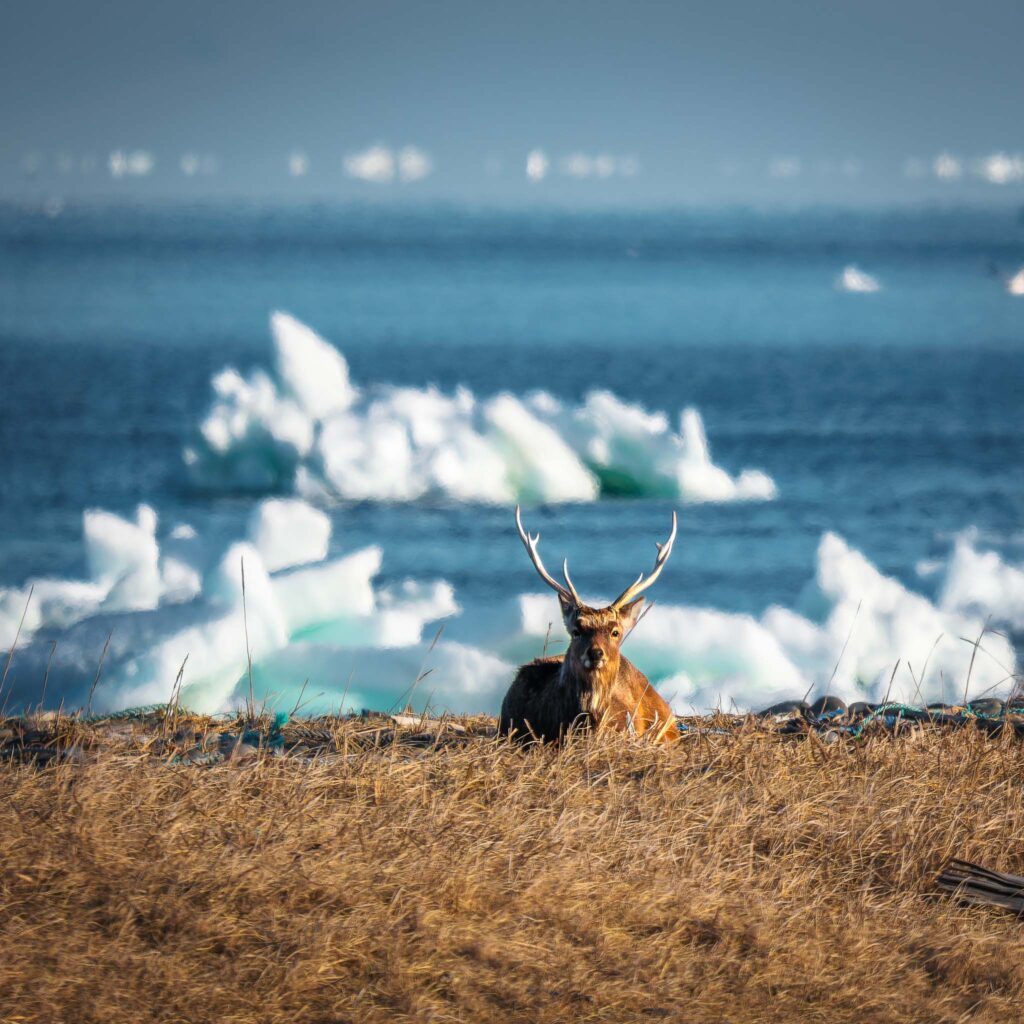
The Notsuke Peninsula is a wild, windswept sand spit on the eastern side of Hokkaido, just south of the famous Shiretoko Peninsula. Stretching 26–28 km into the Sea of Okhotsk, it is Japan’s longest sand spit, shaped like a fishhook with the shallow and sheltered Notsuke Bay on its inner side.
I visited during winter, drawn to the peninsula for its incredible opportunities in wildlife and landscape photography. The harsh environment transforms the area into a surreal and visually striking scene, perfect for capturing unique images. On the inner side of the spit, clusters of Mongolian oak (Quercus crispula) and the skeletal remains of Sakhalin fir trees (Abies sachalinensis) stand resilient against the elements. These trees, twisted and sculpted by relentless wind and saltwater intrusion, offer an otherworldly and haunting beauty. The firs in particular, found in areas like Todowara, have withered due to seawater exposure and soil erosion, creating a ghostly and surreal landscape.
Along the outer coast, sections of the beach are fortified with tetrapods, common in Japan to combat coastal erosion. Between these, scattered fishing huts and boats line the shores, while sea ice drifts along the coastline.
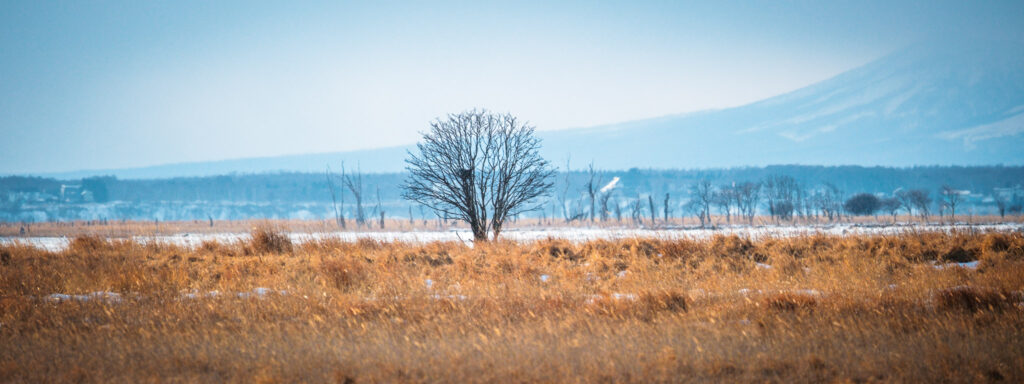
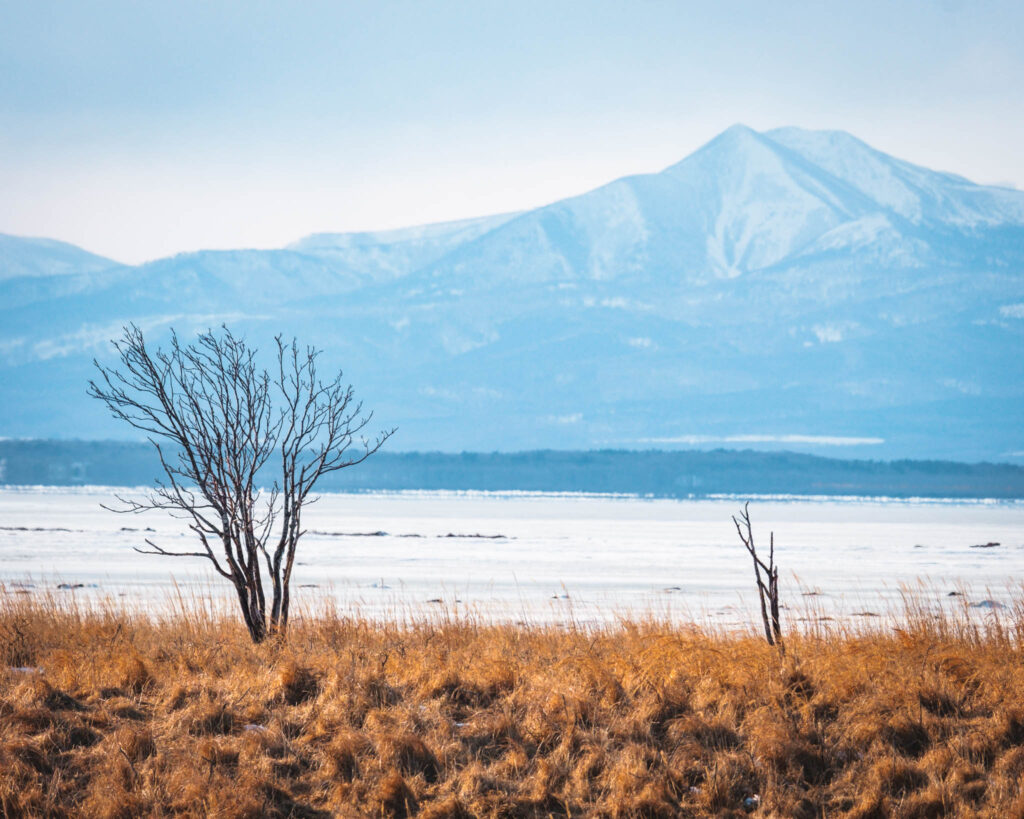
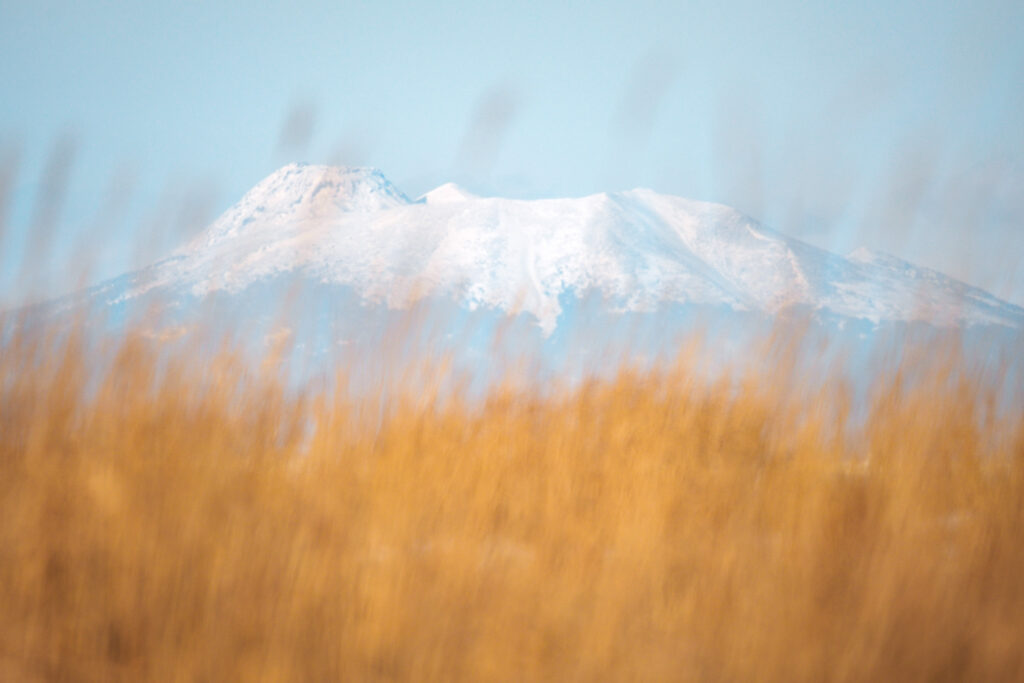
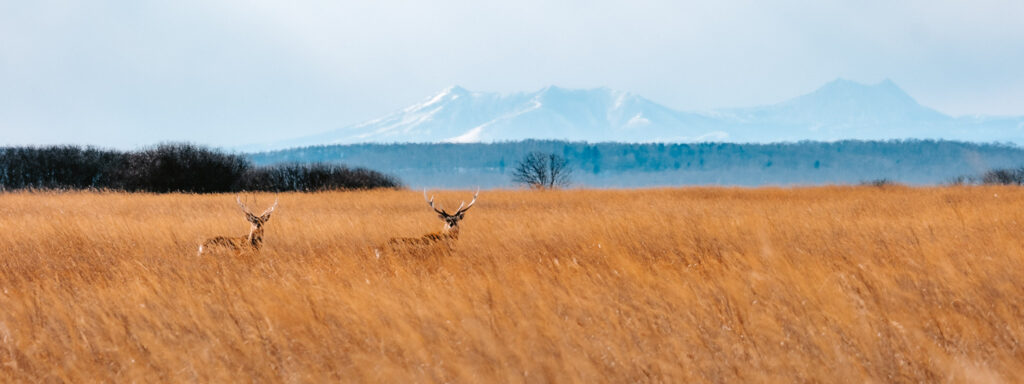
To Get There:
I traveled to the peninsula as a day trip from Rausu, where I had been photographing Steller’s sea eagles and white-tailed eagles. From Rausu, head south along the eastern coast for about 50 km before turning off onto Route 950, which takes you 11 km out along the Notsuke Peninsula.
If you’re coming from another part of Hokkaido, Shibetsu is the closest town and a good base for visiting the peninsula. Alternatively, the nearest airport is Nemuro Nakashibetsu Airport, just a 45-minute drive away.
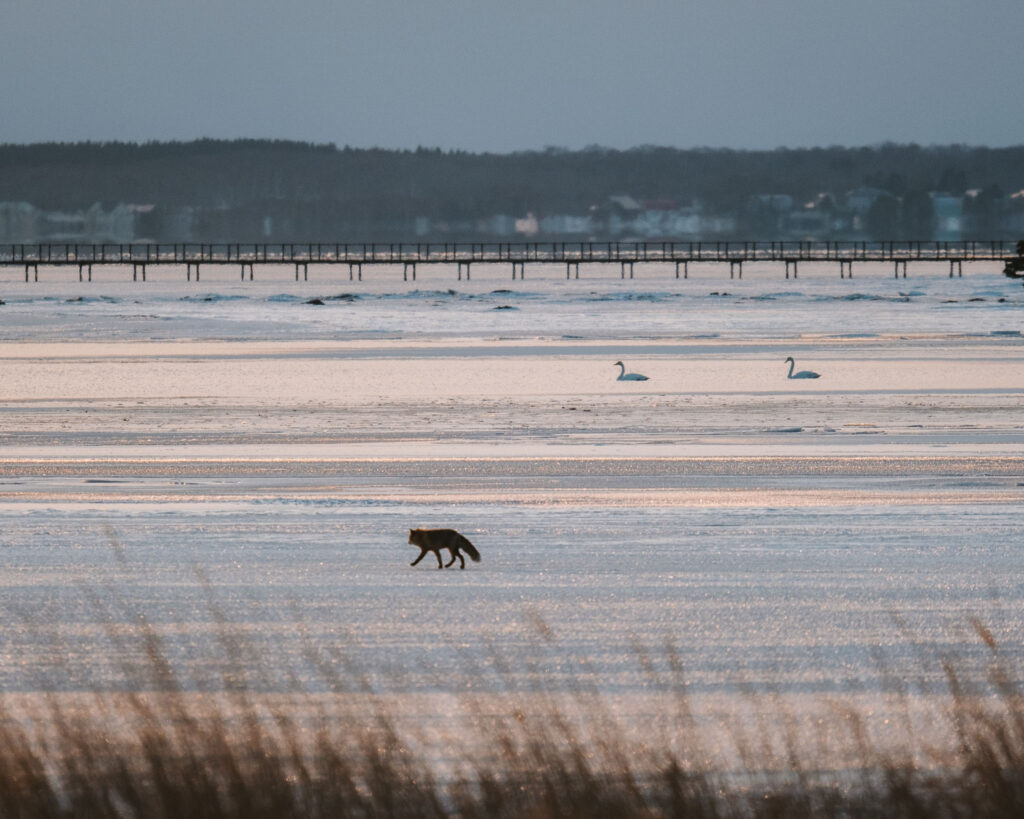


Photography Experience on the Peninsula
For this trip, I used my Fujifilm X-H2S camera, paired with the Tamron 150–500mm for wildlife and distant landscapes, and the Tamron 17–70mm f/2.8 for closer wildlife and detailed landscape shots.
It was mid-afternoon by the time I turned off the main road onto the peninsula. The drive was slow as I kept stopping to photograph windblown dead trees, frozen sea ice, and the many deer wandering across the snow-covered landscape.
The frozen sea ice formations were mesmerizing. Along the outer coastline, intricate patterns of ice meeting gravel created surreal scenes that felt delicate yet raw. Capturing these formations up close gave me a deep appreciation for the unique beauty of the peninsula’s winter environment.
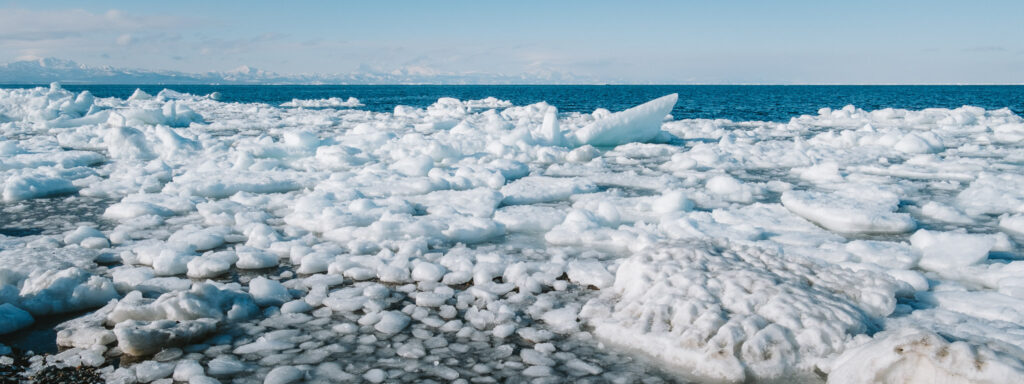
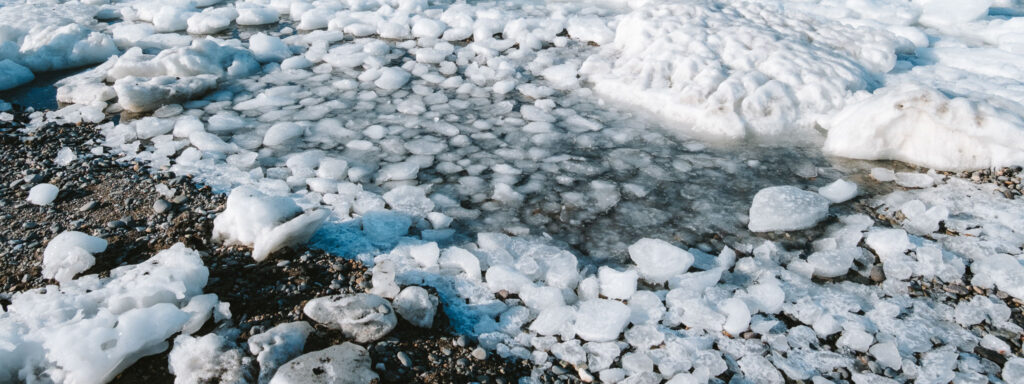
Further along, I framed a deer through the twisted branches of a tree. The natural border created by the branches added depth and intimacy to the composition, perfectly capturing the quiet beauty of the peninsula.
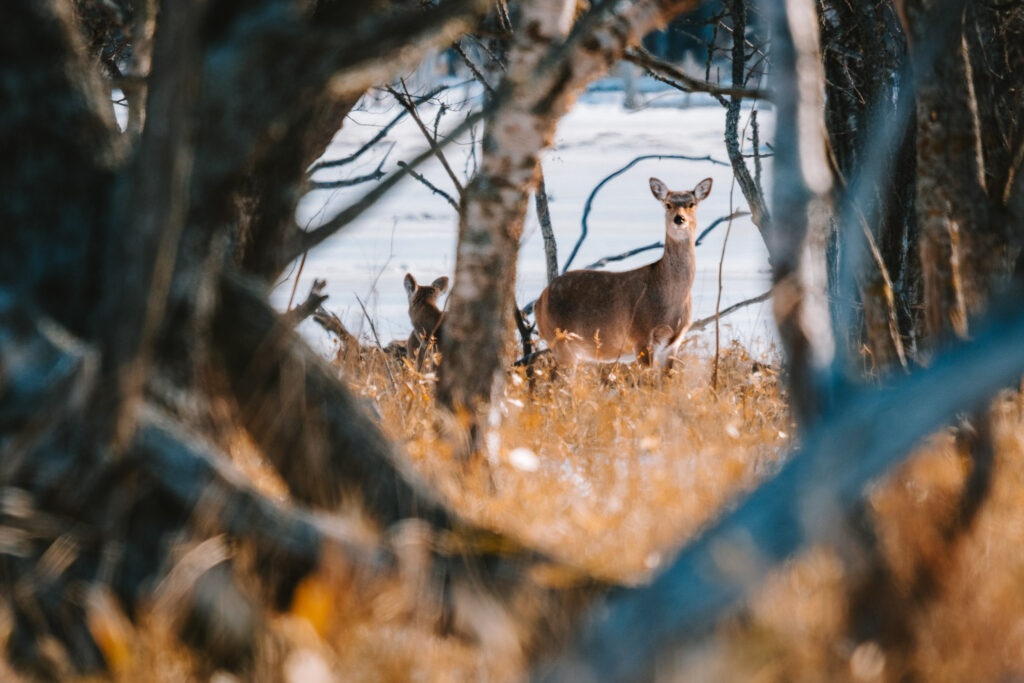
At the end of the road, I reached the visitor center. By then, it was close to sunset, and the light was turning golden. I briefly explored the center, which offers exhibits on the area’s history, wildlife, and landscapes, as well as an observation deck. There’s also a short trail leading to a bird hide, but with limited time, I decided to forgo it and instead revisit spots I had passed earlier. I’ll definitely return someday to explore the trails more thoroughly.
The golden light of sunset lit up the deer, highlighting their features against the dry grass and frozen wetlands. It was a quiet and peaceful scene, with soft, warm tones. On the opposite side of the road, I spotted a fox crossing the frozen Notsuke Bay, a rare and magical sight.
As I explored further, I came across a stag , framed against the vast expanse of drifting sea ice. This was one of those magical moments where wildlife and landscape photography come together, perfectly reflecting the rugged and wild character of Notsuke.
As the sun dipped lower, I finished the day photographing some old fishing boats and huts on the bay side. The golden light, combined with the rising moon, created a serene and timeless scene, capturing the rugged beauty of Notsuke Peninsula.
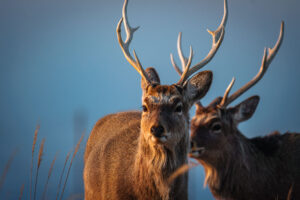
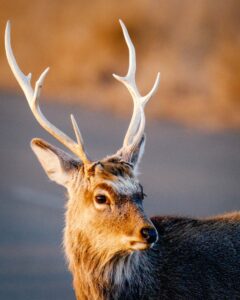

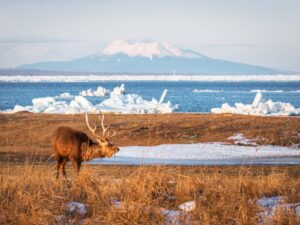
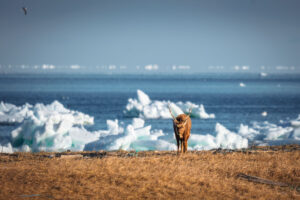
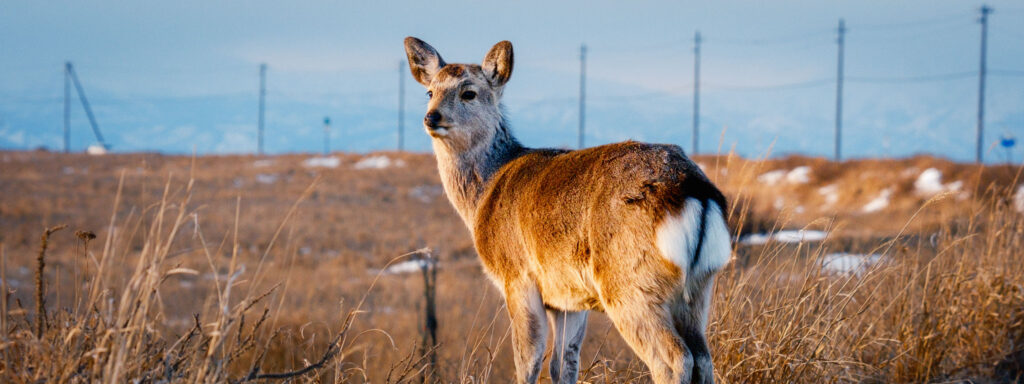
Tips for Photographers
Best Time to Visit: Winter offers a stark, otherworldly landscape, while summer brings migratory birds and lush greenery. Plan your visit around what you want to photograph.
Gear Recommendations: Bring a telephoto lens for wildlife and a wide-angle or mid-range lens for landscapes. A tripod can also be helpful, especially for low-light conditions.
Lighting: The golden hours of sunrise and sunset are ideal for capturing the peninsula’s unique light and shadows.
Clothing: Winters here are harsh—dress warmly with layers and sturdy, waterproof boots.

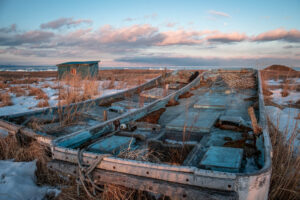
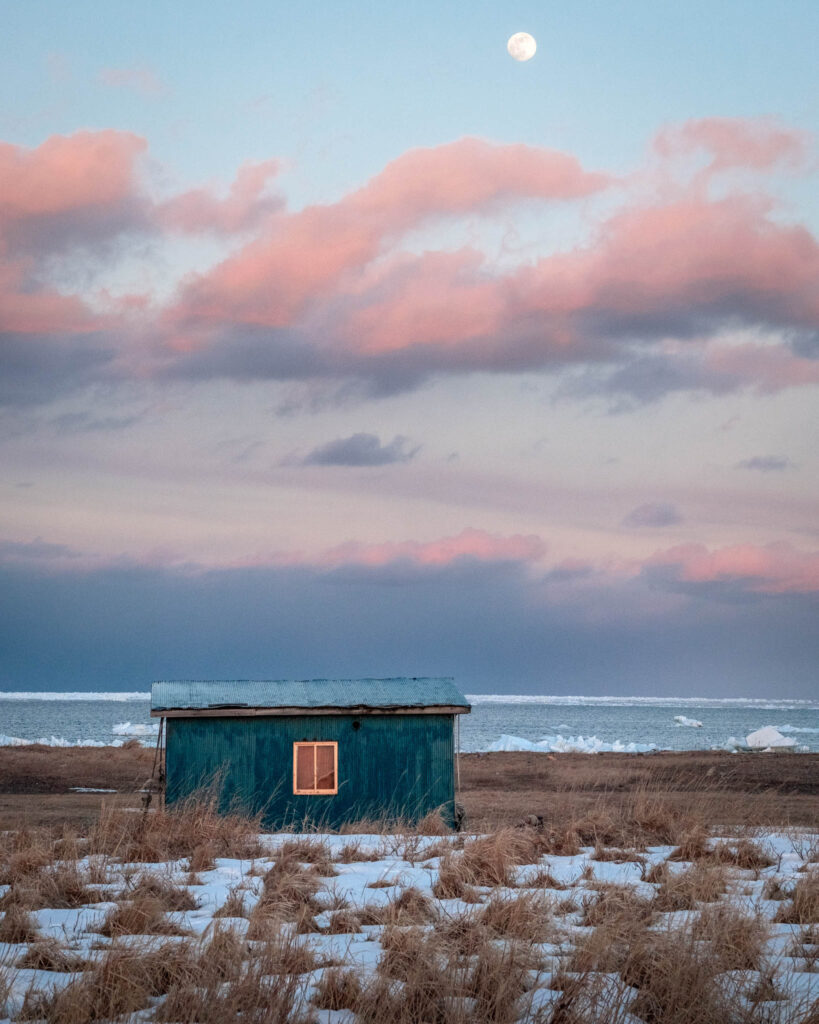
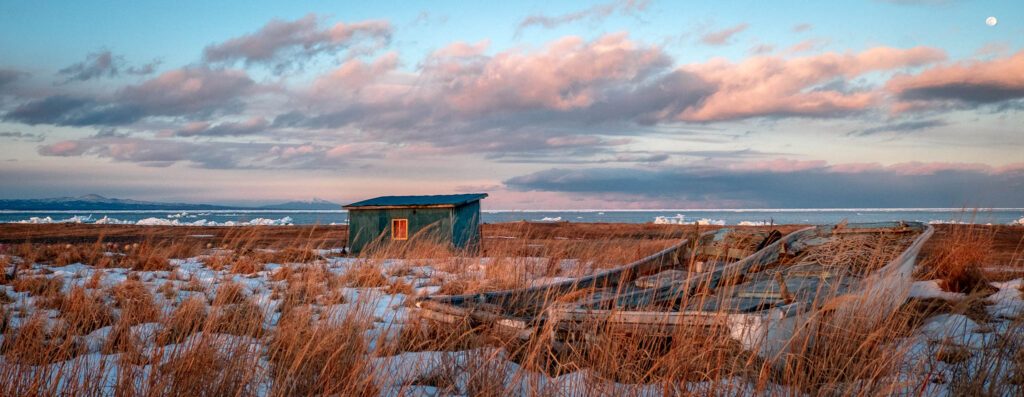
Conclusion
Notsuke Peninsula offers a rare combination of dramatic landscapes and abundant wildlife, making it an unforgettable destination for photographers and nature lovers. From the skeletal trees of Todowara to the frozen sea ice and grazing deer, every corner of this remote spit feels like stepping into another world.
